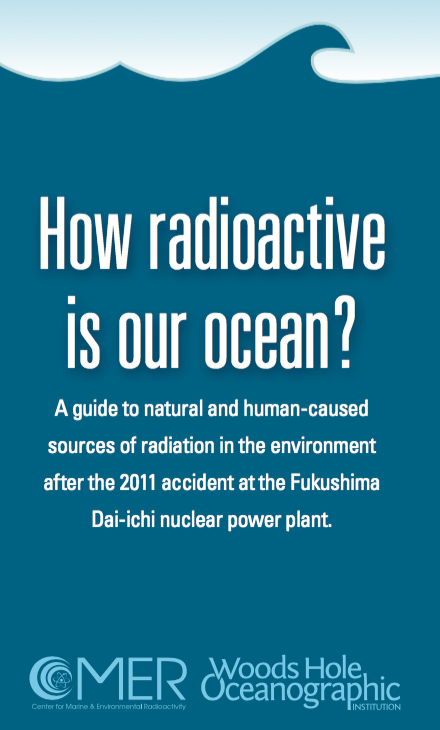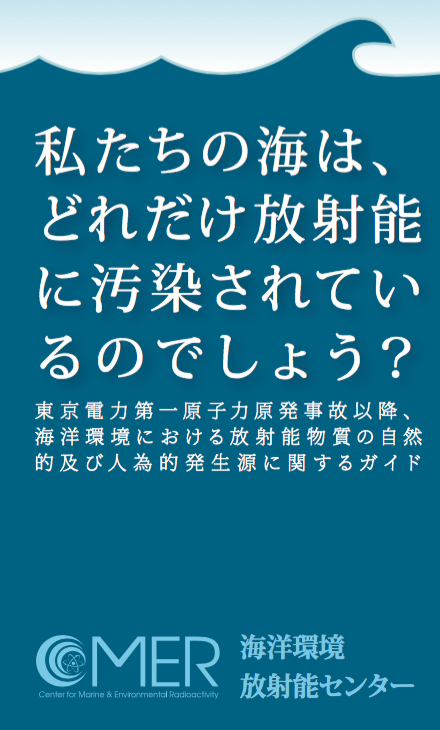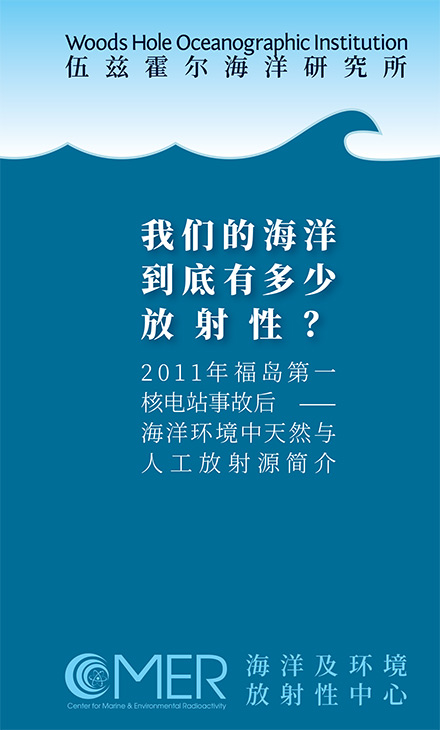WE NEED YOUR HELP
There currently is no U.S. or international agency monitoring the arrival of radioactive water from Fukushima along the West Coast. As well, no organizations monitor water around nuclear power plants once it reaches the ocean. Although we don't expect levels to be dangerously high in the ocean or in our seafood as the plume spreads across the Pacific, or away from other nuclear discharge, this evolving situation demands careful, consistent monitoring to make sure predictions of contaminant dispersal are true.
We at the Woods Hole Oceanographic Institution already have dozens of seawater samples from the coast of Japan out to the middle of the Pacific, but now we need new samples—from up and down the West Coast of North America and anywhere else we can get them. The trouble is, these samples are expensive to collect and analyze. That is why we are turning to you, your community, and your social network for help.
We hope to have a good distribution of sample sites around the Pacific and over time.
If you want to propose a sampling location near you, all you have to do is raise the cost of testing and shipping (U.S. tax deductible donation of $550 to $600 depending on location) and we will send you a sampling kit with everything you need. We'll also help by setting up a fundraising webpage that you can email to your friends or post on your favorite social media site that will allow you to spread the word and track your progress.
Once you have your kit, sampling is easy (see video below). When we get your sample, it takes a few days to process followed by 48 or more hours just to measure the radiation in a sample after processing. On average it takes about a month before we send you an email with the results and post your data on our interactive map.
See our page Take A Sample for more information and to watch the video.
If you're still interested, contact us with the details of your location and how to reach you so we can begin talking about how you can help.
HOW DOES IT WORK?
Help us by mobilizing your community, school, or social networks to raise the money it takes to analyze 20 liters (about 5 gallons) of seawater for signs of radiation from Fukushima. We'll send you everything you need to take a sample and return it to us.

HELP FUND A SAMPLE
Please consider supporting our ongoing effort to analyze samples from throughout the Pacific for radionuclides. You can do this by supporting one of the sites below with their effort, OR by proposing your own site. All donations to this campaign are tax deductible in the U.S.
PROPOSE A SITE
email: jdrysdale@whoi.edu
SUPPORTERS
Photos submitted to us by support teams.
Many thanks to the organizations associated with this project:
Alaska Native Tribal Health Consortium
Bamfield Marine Science Centre
Bandon Designs
Bing Gong
California Marine Sanctuary Foundation
Dominical Real Estate
European Commissions Joint Research Centre in Geel, Belgium
Friends of French Creek Conservation Society
Gordon and Betty Moore Foundation
Gwaii Haanas National Park Reserve
Humboldt State University Marine Lab
Idaho Section of the American Nuclear Society
Institute for Building Biology and Ecology
Integrated Fukushima Ocean Radionuclide Monitoring (InFORM) Network
International Medcom
Lush Cosmetics
Norton Sound Economic Corporation
Nuxalk Nation
Paul & Janet Sherman
PFx, a Picture Farm Company
Point Blue Conservation Science
Prince William Sound Science Center
Resurrection Bay Conservation Alliance
Samuel Lawrence Foundation
San Luis Obispo Mothers for Peace
Say Yes! to Life Swims LLC
Scripps Institute of Oceanography
Southwest Alaska Inventory and Monitoring Program, National Park Service
St. Mary's School
The David Suzuki Foundation
The Guacamole Fund
Tillamook Estuaries Partnership
UC Davis Marine Pollution Studies Lab
Ucluelet Aquarium
Umpqua Soil & Water Conservation District
University of Hawaii
West Hills STEM academy
Whale Song Project
Woods Hole Oceanographic Institution
Woods Hole Seagrant
And a special thanks to the more than 450 concerned citizens who have made individual donations.
EDUCATE YOURSELF
SHOULD I BE WORRIED?
The ocean contains many small sources of naturally occurring radiation that in most places exceeds the dose provided by radioisotopes released from Fukushima. In addition, the remnants of nuclear weapons testing in the 1960s and 70s are also still detectable around the world. Except for locations on land in Japan and sites near the Fukushima Dai-ichi nuclear power plant, all of these sources combined pose little risk to human health. Read more
To describe the level of radiation in seawater samples, we use Bequerels (Bq), which equal the number of radioactive decay events per second, and report this number per cubic meter (1,000 liters or 264 gallons) of water. A typical sample will likely contain less than 10 Bequerels per cubic meter (Bq/m3) from cesium-137, thousands of times less than the radioactivity produced by naturally occurring isotopes such as potassium-40. By comparing the amount of cesium-137, which has a relatively long 30-year half life, and cesium-134, which has a much shorter, 2-year half life, we can “fingerprint” the contamination from Fukushima and estimate how much was released into the Pacific.
To understand exposure, we need to consider this number as well as the type of radiation produced (alpha particles, beta particles, or gamma rays) and the method of exposure (external or internal). Exposure is reported in Sieverts (Sv) or, more commonly, milli-Sieverts (mSv, or 0.001 Sv). Background radiation—the amount we receive from cosmic rays—amounts to 2 mSv at sea level. A single dental x-ray provides an exposure of as low as 0.005 mSv.
HOW RADIOACTIVE IS OUR OCEAN?
View a guide to natural and man-made sources of radiation in the environment post-Fukushima.
NEWS & EVENTS
IN THE NEWS
Fukushima: Japan insists release of 1.3m tonnes of ‘treated’ water is safe
The Guardian - Feb. 14, 2023
More data needed before ocean release of Fukushima water
K. Buesseler, Japan Times - Aug. 26, 2022
Something in the water: controversy courts the Fukushima clean-up
Heidi Vella, Power Technology - June 2, 2021
10 years after Japan's Fukushima Daiichi meltdown, I'm still worried. K. Buesseler, Newsweek, March 10, 2021.
Fukushima contaminants found as far north as Alaska’s Bering Strait
Y. Rosen, Reuters - March 28, 2019
What I learned from an ocean radioactivity testing project
K. Buesseler, Scientific American - March 5, 2018
RESEARCH NEWS
K. Buesseler (2020) Opening the floodgates at Fukushima (pdf). Science, 369(6504), 621-622. DOI: 10.1126/science.abc1507.
J. Kenyon et al. (2020) Distribution and evolution of Fukushima Dai-ichi derived 137Cs, 90Sr, and 129I in surface seawater off the coast of Japan (pdf). Environmental Science and Technology, 54(23), 15066-15075.
S. Nagao et al. (2020) Desorption behavior of Fukushima-derived radiocesium in sand collected from Yotsukura Beach in Fukushima prefecture (pdf). Analytical Sciences, 36, 569-575.
March 2019 Results & Project Update
Battle et al. Marine radioecology after the Fukushima Dai-ichi nuclear accident: Are we better positioned to understand the impact of radionuclides in marine ecosystems? Science of the Total Environment, 618, 80-92.
OCEANUS MAGAZINE
MAY 9, 2013
Communication in the Fukushima Crisis

MAY 8, 2013
Radiation Health Risks
ABOUT THIS PROJECT
The world's oceans contain many of naturally occurring radioactive isotopes, as well as the remnants of nuclear weapons testing in the 1950s and 60s. Starting in 2011, fallout, runoff, and continued leaks from the Fukushima Dai-ichi nuclear power plant added to this baseline and sparked fears of wide-ranging impacts to the marine ecosystem and human health. Despite concerns, there is no U.S. government agency monitoring the spread of low levels of radiation from Fukushima along the West Coast and around the Hawaiian Islands—even though levels are expected to rise over coming years.
Whether you agree with predictions that levels of radiation along the Pacific Coast of North America will be too low to be of human health concern or to impact fisheries and marine life, we can all agree that radiation should be monitored, and we are asking for your help to make that happen.
The Woods Hole Oceanographic Institution has both the experience and facilities to monitor and track the spread of radionuclides released from Fukushima in the waters of the Pacific Coast of North America. The Institution and the Center for Marine and Environmental Radiation (CMER) are uniquely equipped to provide consistent, accurate assessment of both natural and manmade radiation in marine samples and is hosting this site to make this information readily available to everyone in a timely manner.
SPECIAL THANKS TO:






